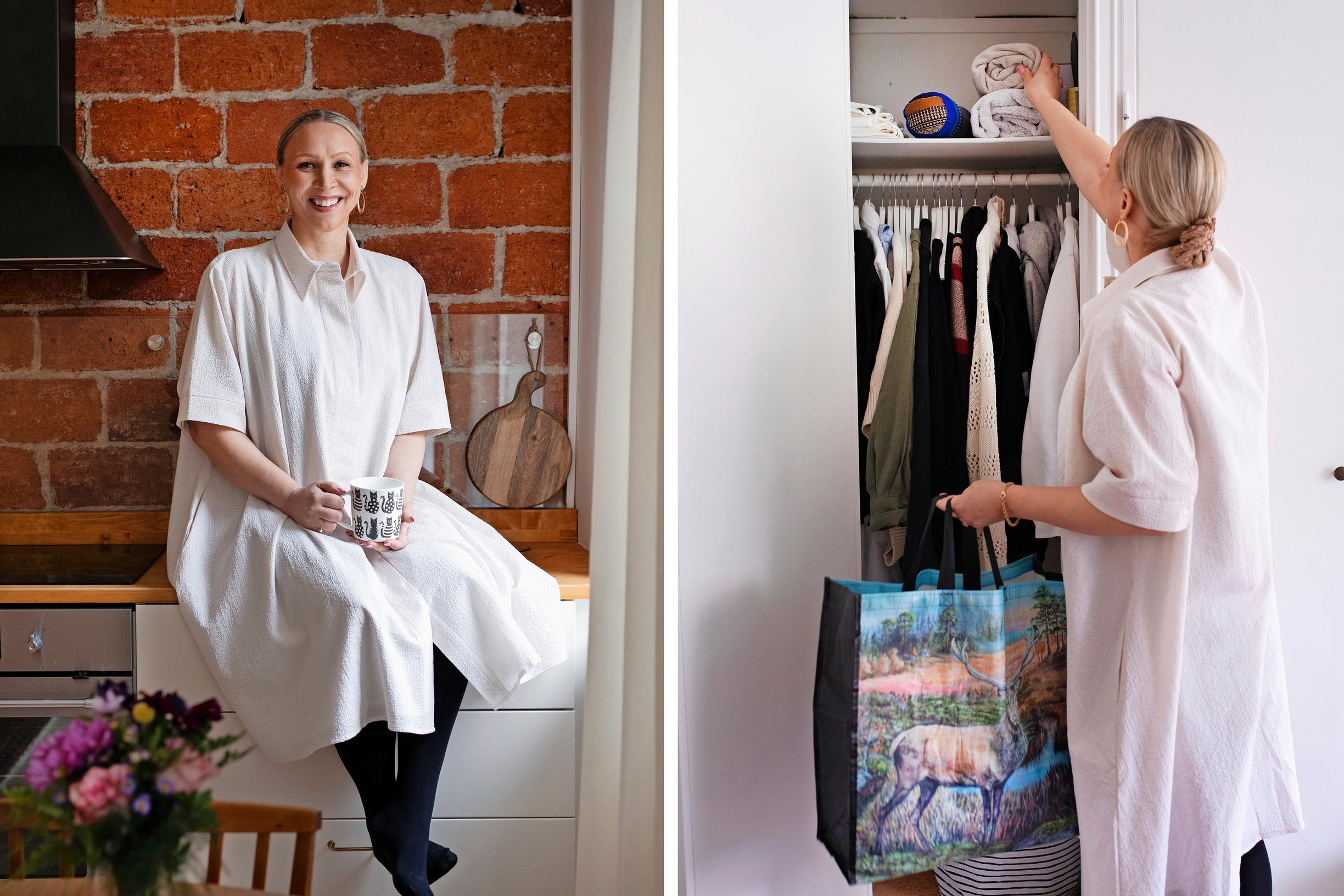
“How can there possibly be so much stuff?”—clearing out their big house changed Kati Jukarainen’s relationship with possessions
When Finnish landscape designer and TV personality Kati Jukarainen’s children were approaching adulthood, she woke up to the amount of stuff that had accumulated in their home. The clear‑out stirred nostalgia but also anxiety, which has permanently reshaped her relationship with possessions.
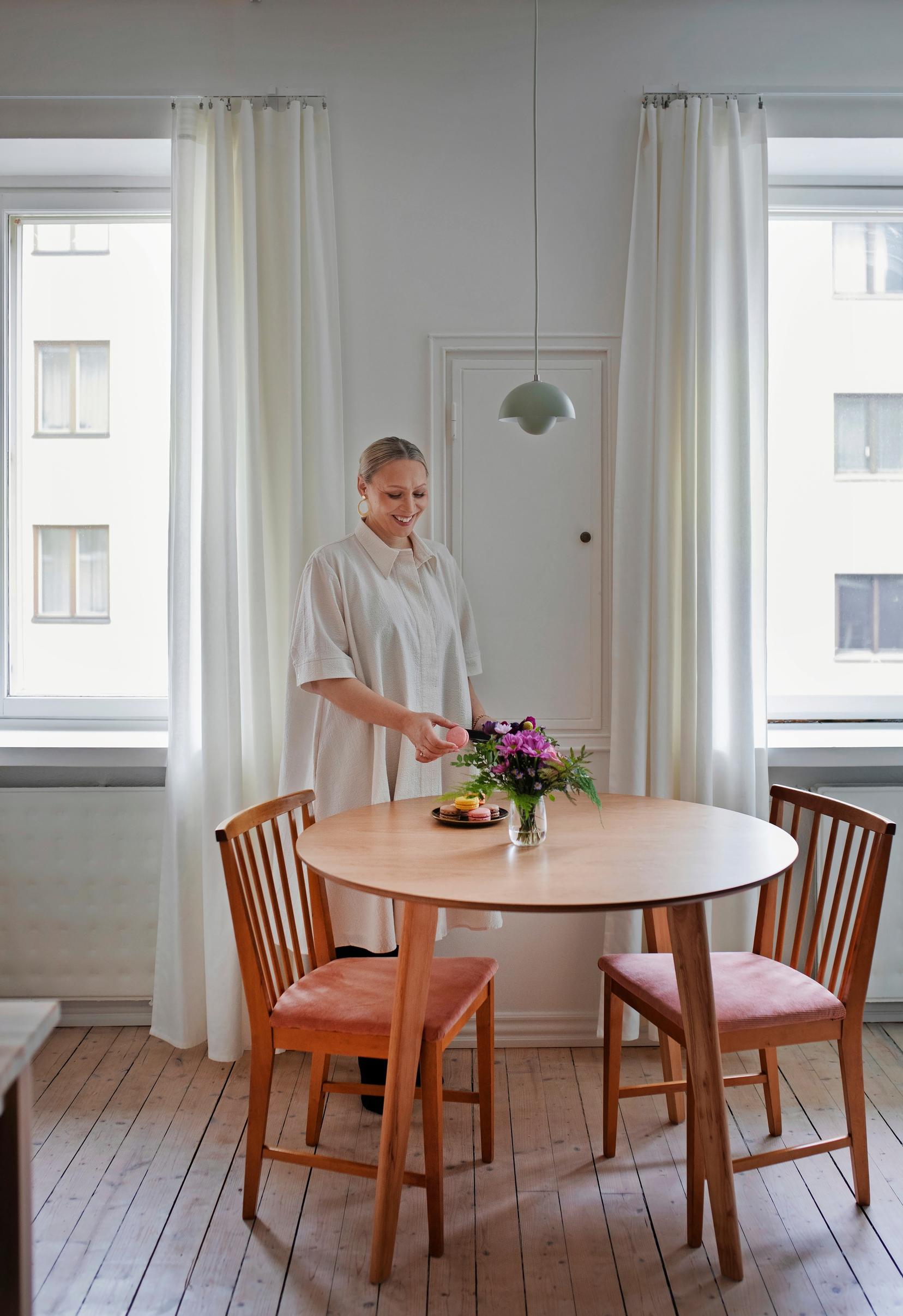
“How can there possibly be so much stuff?” Kati Jukarainen has found herself asking this question many times over the past year. She is in the middle of a project to declutter the family’s large detached house room by room.
The idea for the project had been simmering for years. The volume of belongings had started to give Kati anxiety, especially because she knew how many unnecessary things they were storing.
“I had this thought in the back of my mind that one day we’d have to go through everything.”
About a year ago Kati and her partner decided they would give up the house in the next few years and move to something smaller. The eldest child of the family, now 18, still lives at home, but the 16‑year‑old spends school weeks in a city apartment with their other parent. The arrangement shortens the commute to school, and the idea is that the child will later stay in the apartment as a tenant.
The family have gone through the life stage familiar to many families with kids: clothes are constantly outgrown and gear is needed for every new hobby. In the thick of those hectic years, no one had the energy to figure out what to do with items they no longer needed.
For the first time, Kati even went through the boxes she had brought with her from her childhood home and that had followed her through many different homes. She got rid of plenty of the contents. The letters she burned.
Another reason the belongings piled up is that Kati’s family has so much space. Alongside the big house they have a 60‑square‑meter guesthouse and a city apartment. With a huge amount of storage, they never ran out of room.
Sorting through the children’s things ties into a bigger change: soon they will leave behind the home where the kids grew up. Eventually Kati managed to push the aside the anxiety she felt about the project. She wanted to start early, even though the nest wasn’t empty yet.
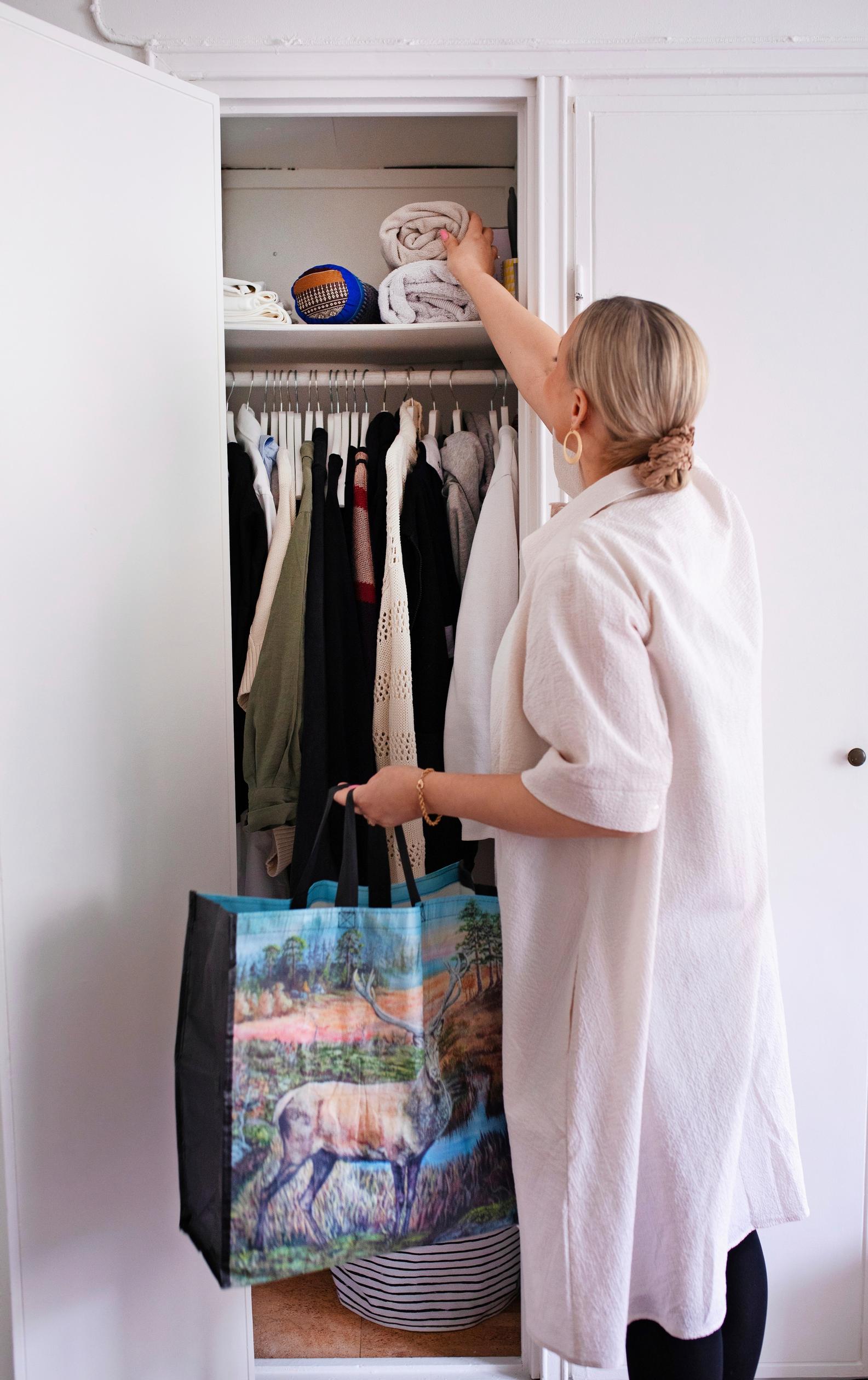
The traces of the toddler years
Kati and her partner moved to their house in Vihti, Finland, 18 years ago, just as they were starting their family. With the children, the amount of stuff grew quickly. During the toddler years, Kati was a stay-at-home mother and had time to sell outgrown clothes and baby gear.
“I made really carefully considered purchases, and many clothes were worn by both children. Even so, winter clothes and shoes, for example, piled up in shocking quantities.”
The garage provided a solution to the problem. Over the years, it had filled with everything: sports equipment, children’s clothes, heirlooms, the parents' childhood and teenage mementos, photographs and gardening supplies.
“The thought of going through the garage horrified me the most.”
Kati didn’t read organizing guides or try KonMari‑style methods. She set aside part of her summer vacation for the garage and simply started going through it.
“Decluttering can be really heavy work. Why make it even heavier by whipping yourself?”
To her surprise, she was finished in three days. Kati realized that the best method for her is to handle one cupboard or one room at a time.
As she sorted through things, Kati started noticing they had duplicates of many categories of stuff, such as cables, ornaments, wrapping paper and home textiles. She has pared these down several times already, but some objects are associated with memories or the feeling they might still be needed.
If she gets stuck on an item, Kati moves on. That happened, for example, with her porcelain animal collection. She parted with many of her ornaments but couldn’t decide what to do with the last few.
Kati also tries to keep the decluttering sessions relaxed. You can take a break whenever you like—it doesn’t have to wait until a certain box has been sorted through, for instance.
“Decluttering can be really heavy work. Why make it even heavier by whipping yourself?”
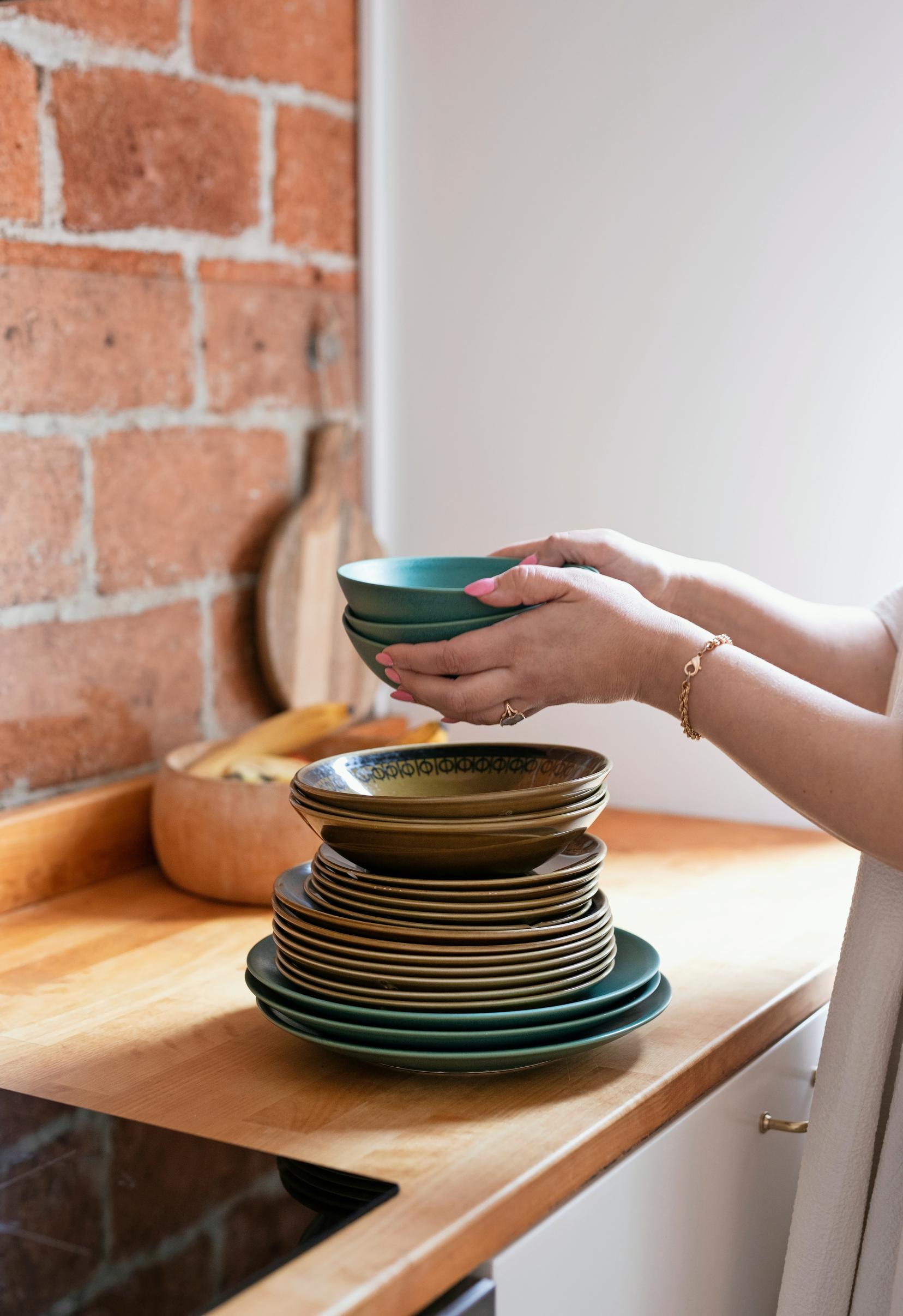
A new relationship with stuff
Kati’s relationship with possessions has changed many times throughout her life. She says she grew up in a regular working‑class family where money was often tight. Once she started earning her own money, owning things felt important.
"The world is different from twenty years ago, when sustainable consumption wasn’t discussed like it is now."
You see it in her parents’ generation too: their homes often contain huge amounts of stuff. Kati’s garage, for instance, long housed dishes they'd received from her partner’s family - they had no use for them, but Kati couldn’t bring herself to sell them because of their sentimental value.
“Luckily, the tea set and some plates have now found a new life with our younger child in the city apartment.”
“How did I end up in a situation where I have to declutter at all? It feels like a failure.”
Kati has had to reflect on her relationship with objects in her work as well. On TV, she may encourage clients to buy or build something new, so viewers sometimes assume everything in her own home follows the latest trends.
It has been hard for Kati to grasp how all the extra stuff accumulated, even though she has never been into interior design or impulse furniture swaps. Facing the change in her own consumption habits hasn’t been easy. The anxiety caused by the volume of possessions has outweighed the nostalgia.
“How did I end up in a situation where I have to declutter at all? It feels like a failure.”
Nowadays, Kati follows a strict routine before buying anything new. Instead of impulse buys, she starts by defining the need and thinks carefully before deciding to buy.
“I don’t just buy—I really consider whether it’s something I actually need. I hope the decluttering leaves a lasting mark and changes my consumption habits for good.”
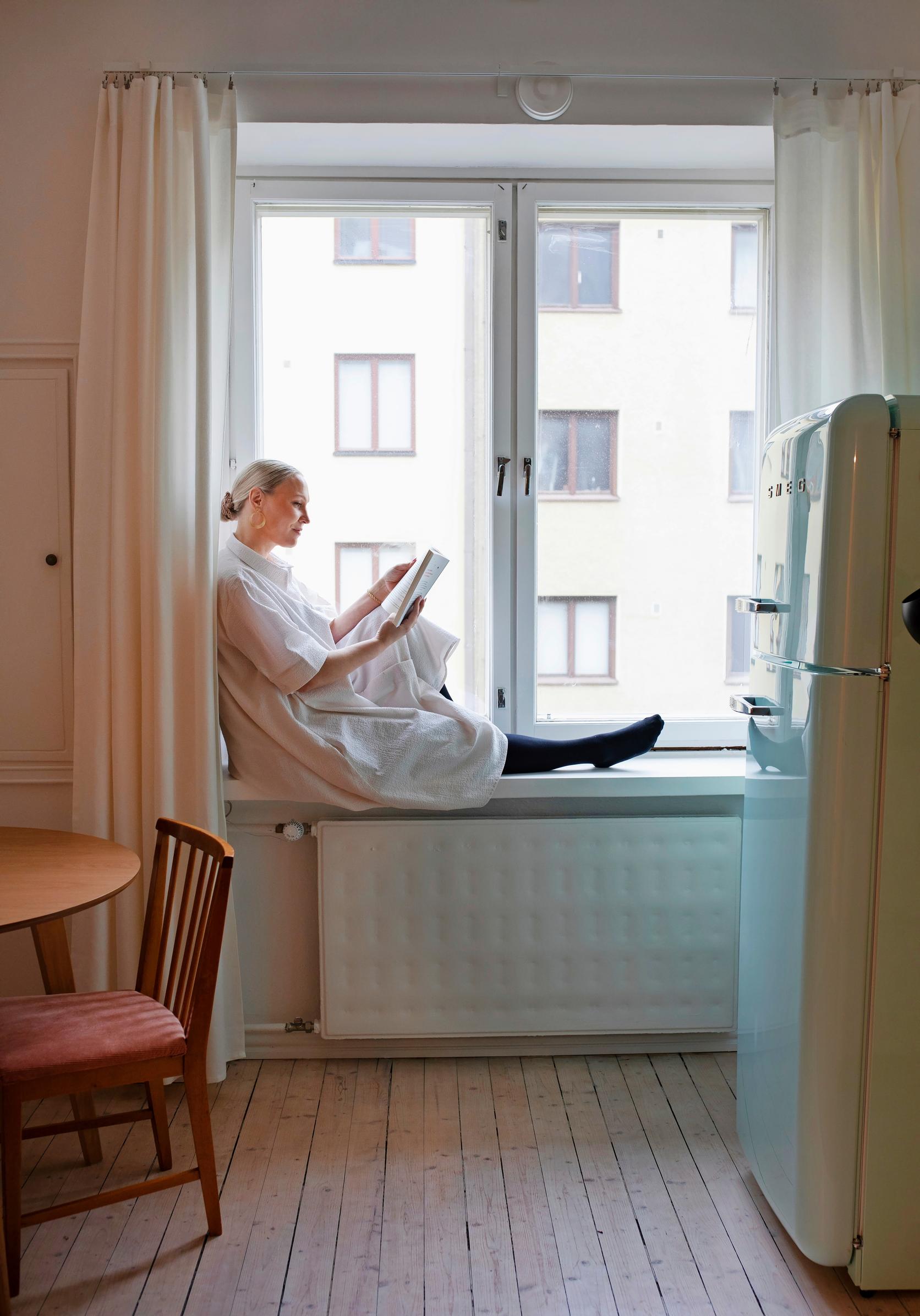
“I don’t get hung up on money—I want the items to be put to use.”
Opening the memory boxes
Letters, photos, magnets, jewellery and concert tickets. For the first time, Kati even went through the boxes she had brought with her from her childhood home and that had followed her through many different homes. She got rid of plenty of the contents. The letters she burned.
“I understand the value of letters from the war years, but I see no reason to keep my middle school best friend’s musings about some boy. Besides, the letters were written by another person and weren’t meant for everyone to read.”
She also found huge piles of random photographs. Kati has sorted them into boxes to wait for the next phase. The worst shots she threw away.
“No one wants to see endless landscape shots from Greece or photos with the exposure all wrong.”
At the same time, she has carefully curated the children's memory boxes. During the decluttering project, she went through their clothes, games and toys once more. They now fit into five boxes instead of ten.
“I’ve also been thinking that, once I’ve done this, no one will have to do any death cleaning [in Finnish]. From now on we’ll keep a strict rein on our belongings.”
Last summer, Kati carried old outside toys, pots and garden tools to the roadside and posted about them in the village group.
Not hung up on the money
It’s important to Kati that the decluttering is done sustainably, and she encourages everyone to do the same. The clothes she had outgrown went to the flea market, even though they were intact and good-quality.
“I’ve had to admit to myself that I’m not going to be the size I was at thirty,” Kati says, laughing.
To make sure discarded items don’t linger around, Kati keeps them in plain sight in the garage. Anything that comes back unsold she reviews immediately, considering whether some of them could be donated.
“I don’t get hung up on the money—I want the items to be put to use.”
Last summer, Kati carried old outside toys, pots and garden tools to the roadside and posted about them in the village group.
“I think it’s a fun way to recycle. Things disappeared as quickly as I put them out.”
Kati has also taken a critical look at the furniture in their home. The kitchen chairs from her first own home and an unused rocking chair are going. She tries to save pieces the children love for when they move out.
The whole family has always enjoyed working out at home, so the room that became their home gym carries a lot of memories. The mirror wall was installed for the younger child’s dance hobby. Over time the room has filled with equipment from crossfit ropes to a stepper, and the family still uses them. But they're unlikely to fit in the next home.
“It’s strange, even the things we use give me anxiety—there’s just so much stuff.”
The day they finally give up the house will be painful. The memories linked to the children live within those old walls.
Plenty of time for grieving
The day they finally give up the house will be painful. The memories linked to the children live within those old walls, and the large garden has been special to Kati.
“I’m going to miss the garden. I’ve grown many of the plants from seed, and put in a huge amount of work so they can now live their own lives.”
Kati also knows a big round of decluttering still awaits on moving day.
“In my head, I’m already doing a mental waltz, deciding which pieces of furniture to keep and where the rest will find a new life.”
And indeed, Kati is grateful for having plenty of time. She has heard from people who had to empty out estates in just a few days.
“Luckily, I still have four to five years to go through this grieving process.”
Kati’s tips: how to store childhood memories
- “Sort by theme. We have one baby box for the early years. The rest are toys, books and games, organized by category. Drawings and crafts are saved in a lidded box so they stay in good condition and don’t get wrinkled. School reports and photos have their own box.”
- “Listen to the children’s wishes. Our younger one wants a few toys kept; the older one wants to keep football mementos.”
- “No pressure on future generations. The children’s things can stay with us until they want them. I don’t think of it as saving things for my grandchildren—I don’t want my kids to feel pressured about that when they’re older.”


